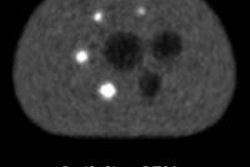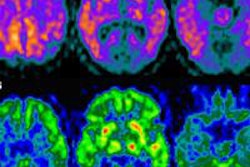Researchers from Ohio State University have completed a pilot study with a peptide-based molecule that could function as both an optical and nuclear imaging agent, with both therapeutic and diagnostic uses.
The molecule, HN1, is able to carry a near-infrared agent for optical imaging and a radiopharmaceutical for nuclear medicine, according to the researchers. Such a dual probe could give clinicians the real-time, detailed view of fluorescent imaging with the measurement ability of a radiopharmaceutical.
For example, diagnostic specialists could use the HN1 probe labeled with a radiopharmaceutical to detect the location of cancer. Then, using the same probe but this time labeled with a fluorescent agent, surgeons could get real-time visualization of cancer cells, enabling them to make more precise excisions and confirm that they have resected all of the malignant tissue.
For the pilot study, HN1 was labeled with iodine-123, but virtually any radioisotope could be used, according to study co-authors Dr. Chadwick Wright, PhD, and Michael Tweedle, PhD. HN1 was discovered 15 years ago and has a particularly strong affinity for head and neck cancer.
Most peptides are too small to carry more than one type of compound, or they are too big to target cancer cells efficiently; however, HN1 can be labeled with a large chemical and still target cancer cells.
The researchers plan to begin animal studies with the molecule next year, with the goal of having an imaging agent ready to test in humans in the next five years. One question is whether to develop a version of HN1 that could simultaneously perform both optical and nuclear imaging; such an agent would need to have a short half-life to avoid exposing surgeons to radiation during resection procedures.




















